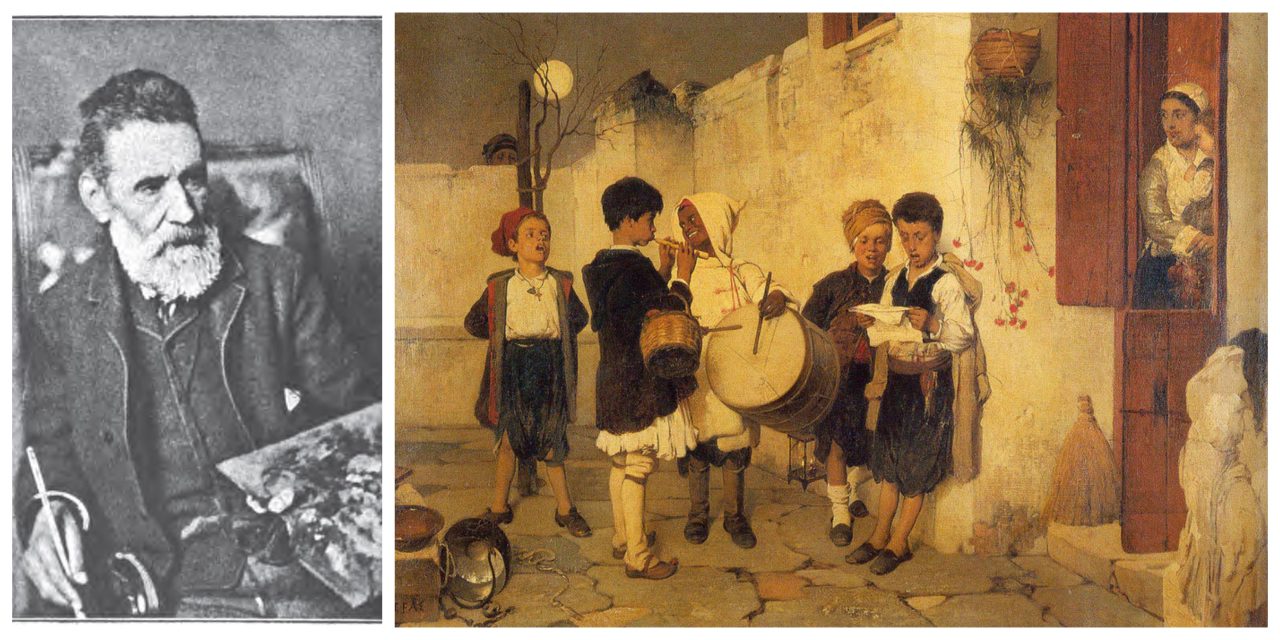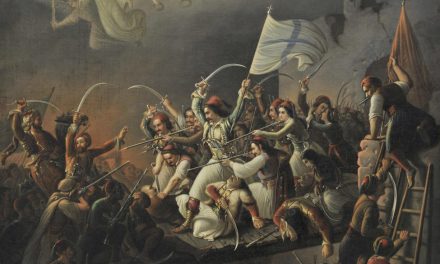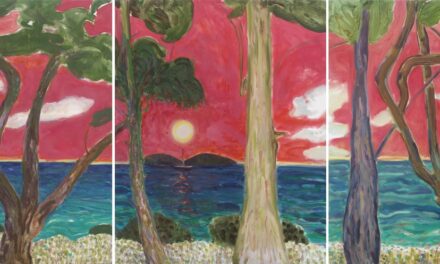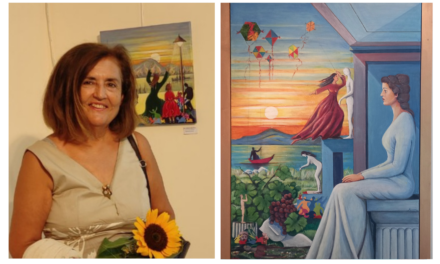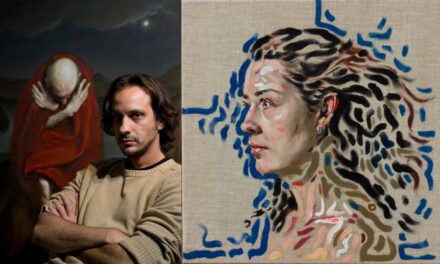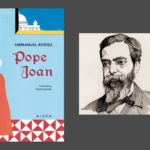The Carols (called “kalanda” in Greek) are performed mostly by young children in their respective neighborhoods, or the homes of friends and relatives, spreading hope and joy; the children are usually rewarded by their parents (or those who choose to open their doors) with some pocket money and sweets. According to the tradition, they are performed three times throughout the festive period: on Christmas (Eve & Day), New Year’s (Eve & Day), and Epiphany, also referred to as Theophany (January 6) when Greeks are commemorating the Baptism of Christ.
Caroling is a long-standing tradition in Greece; this perhaps explains why “The Carols”, created in 1872 by Nikephoros Lytras, is one of the most celebrated paintings in the history of Modern Greek Art, taking us with sincerity, simplicity, and earnestness on a journey of Christmas customs. Depicting a characteristic example of modern Greek ethography, Lytras uses simple means to create an especially lyrical atmosphere, as the moon slowly rises onto a grey yet still luminous sky. Five children of different nationalities sing the traditional Christmas carols in the yard of a farmhouse. The housewife, cradling a baby in her arms, listens to the boys holding pomegranates for tipping. Popping his head over the stone fence, a little boy peers curiously at the scene.
The artist enters the inner world of the young carol singers so that their expression renders feelings. Moreover, many elements of the composition work on a metaphorical level, and with the use of symbols, Lytras rises above the simple narration of his tale; The statue, for instance, on the right-side corner shows the historical continuity of the Greek culture, as well as the painter’s appreciation of his father’s profession, that of a marble sculptor.
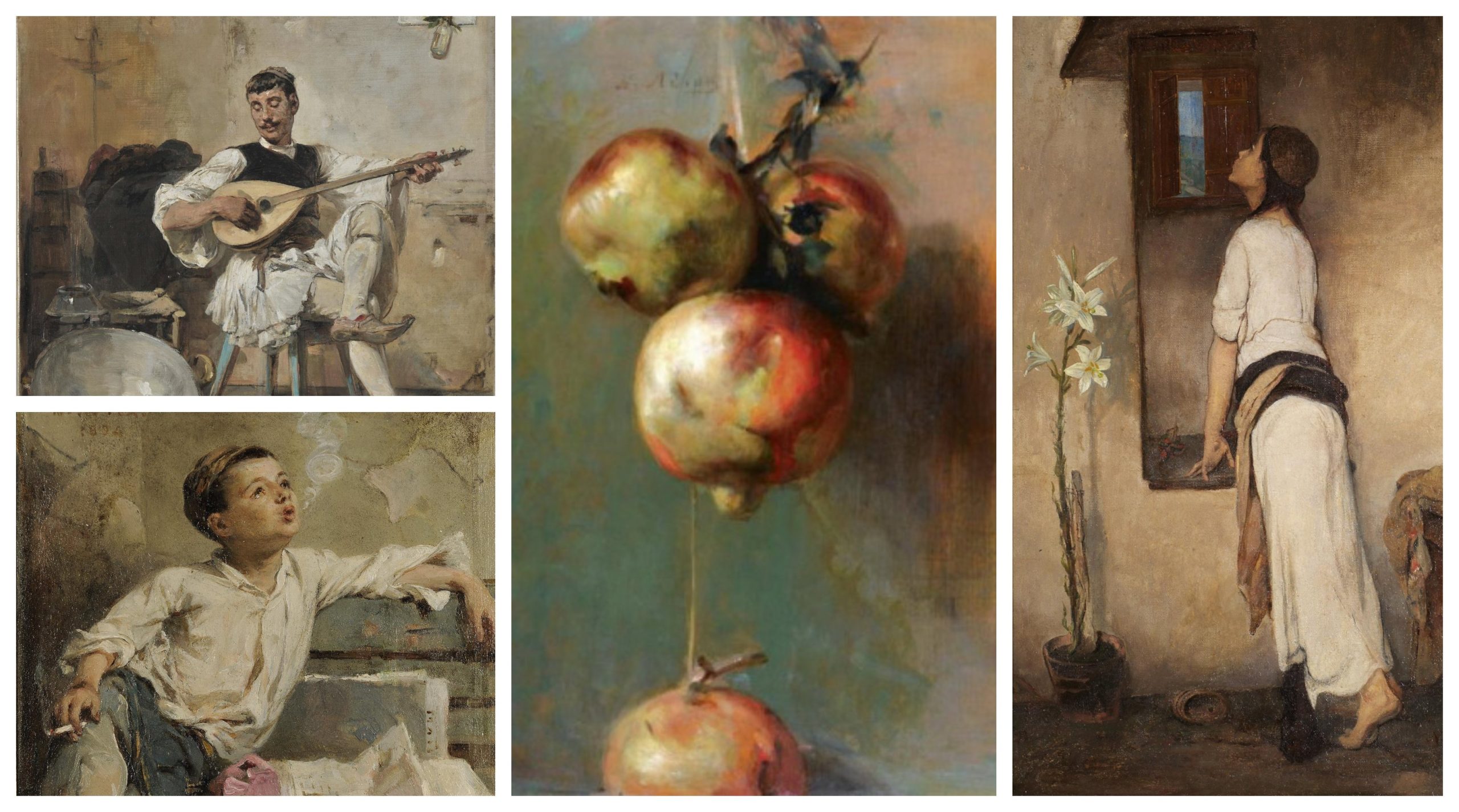 Nikephoros Lytras (1832-1904) is considered the “patriarch” of Modern Greek painting. Born in Pyrgos village on the island of Tinos, Lytras showed his talent from an early age. His teacher, Alexander Bon, saw him drawing and said: “You, my child, were born a painter without ever being taught painting”. At the age of 18, he enrolled in the Athens School of Fine Arts to acquire formal education and training (1850-1856); more specifically, he studied painting under Philippos and Georgios Margaritis, the monk Agathangelos Triantafyllou, Raffaelo Ceccoli, and Ludwig Tiersch, whom he also assisted in the iconography of the Russian Church in Athens (1853-1855). His first contact with the world of art exhibitions was in 1855; while still a student, he took part in the International Exhibition of Paris. A few years later (in 1860), he got a scholarship to continue his studies at the Royal Academy of Fine Arts in Munich with Karl von Piloty as his main teacher.
Nikephoros Lytras (1832-1904) is considered the “patriarch” of Modern Greek painting. Born in Pyrgos village on the island of Tinos, Lytras showed his talent from an early age. His teacher, Alexander Bon, saw him drawing and said: “You, my child, were born a painter without ever being taught painting”. At the age of 18, he enrolled in the Athens School of Fine Arts to acquire formal education and training (1850-1856); more specifically, he studied painting under Philippos and Georgios Margaritis, the monk Agathangelos Triantafyllou, Raffaelo Ceccoli, and Ludwig Tiersch, whom he also assisted in the iconography of the Russian Church in Athens (1853-1855). His first contact with the world of art exhibitions was in 1855; while still a student, he took part in the International Exhibition of Paris. A few years later (in 1860), he got a scholarship to continue his studies at the Royal Academy of Fine Arts in Munich with Karl von Piloty as his main teacher.
Thus, Nikephoros Lytras became one of the leading representatives of the so-called Munich School, combining Academic art tendencies with advanced technical accomplishments. However, unlike his fellow islander, Nikolaos Gyzis, who was elected Professor in the Kunstler-Akademie of Munich, Lytras chose to return to Greece and became a professor at the Athens School of Fine Arts (in 1866), a position he held for almost 40 years -that is, for the rest of his life- decisively influencing the following generations of Greek artists, such as Georgios Iakovidis, Polychronis Lempesis, Spyridon Vikatos, and Georgios Roilos.
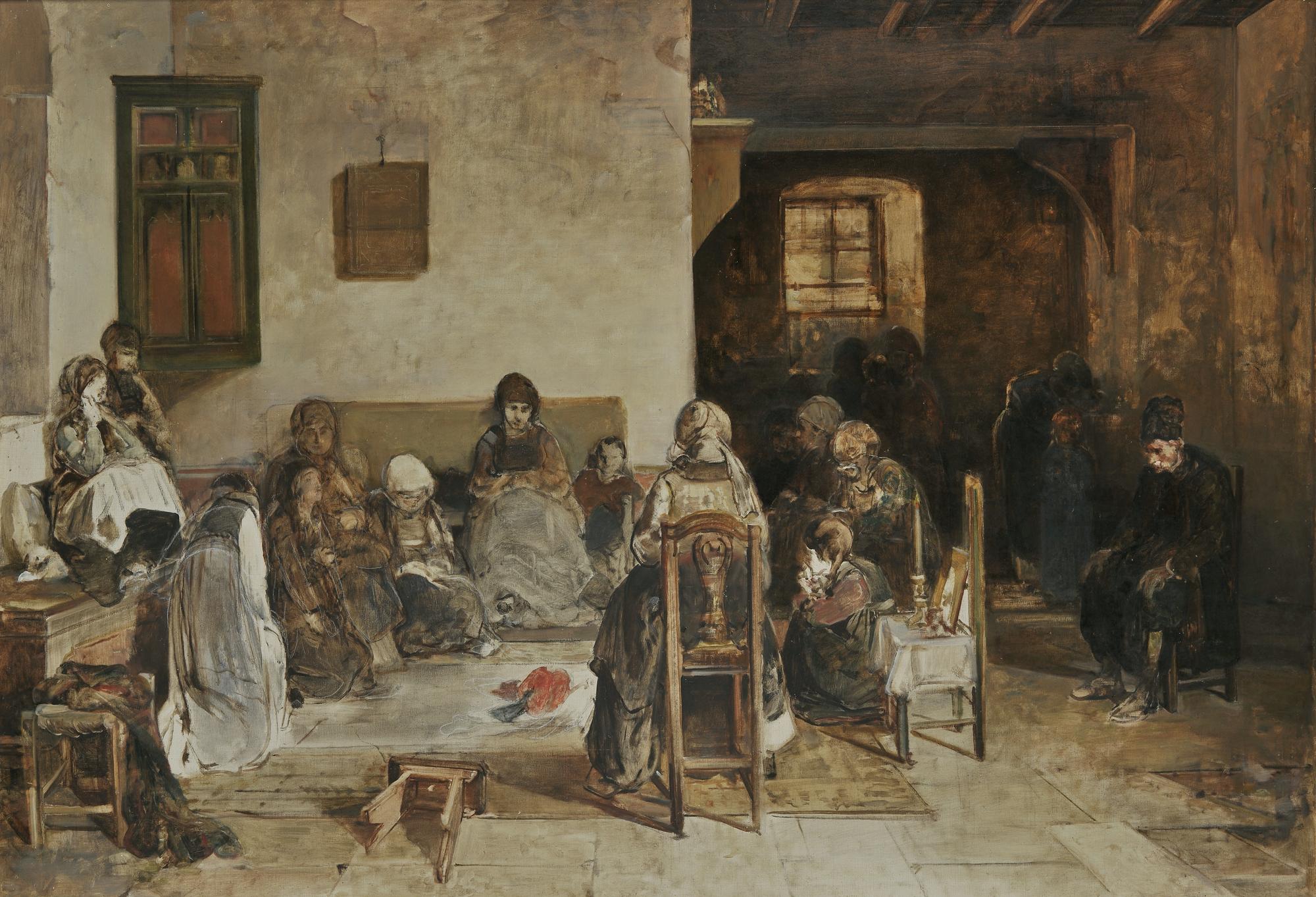
Even though he always urged his students to be open to new trends, Nikephoros Lytras himself remained faithful to the precepts and principles of the Munich School, marking the country’s art history in his own way. In his work, he draws inspiration from Greek mythology and history, and his paintings are dominated by ethographic images with themes of everyday life and local customs. Despite being involved with nearly all forms of subject matter (still life, historical scenes, portraits, etc), the most important part of his work consisted of genre scenes which he, in essence, introduced to Greek painting and which contain aspects of everyday life from the Greek provinces and the urban area, the Greek family and the world of the child. He is also considered to have been a pioneer in the genre of portraiture, as he endeavored to penetrate into the psychology of the figure that was being depicted. In the closing years of his life, he also painted many scenes about aging, loneliness, and the fear of death.
Nikephoros Lytras died in 1904, at the age of 72, after a short illness that is believed to have been caused by his colors’ chemical substances.
Read more on GNA: Art historian Alexandra Kouroutaki on Christmas in Modern Greek painting
E.S.
TAGS: ARTS | FESTIVALS | GLOBAL GREEKS | HERITAGE | HISTORY

